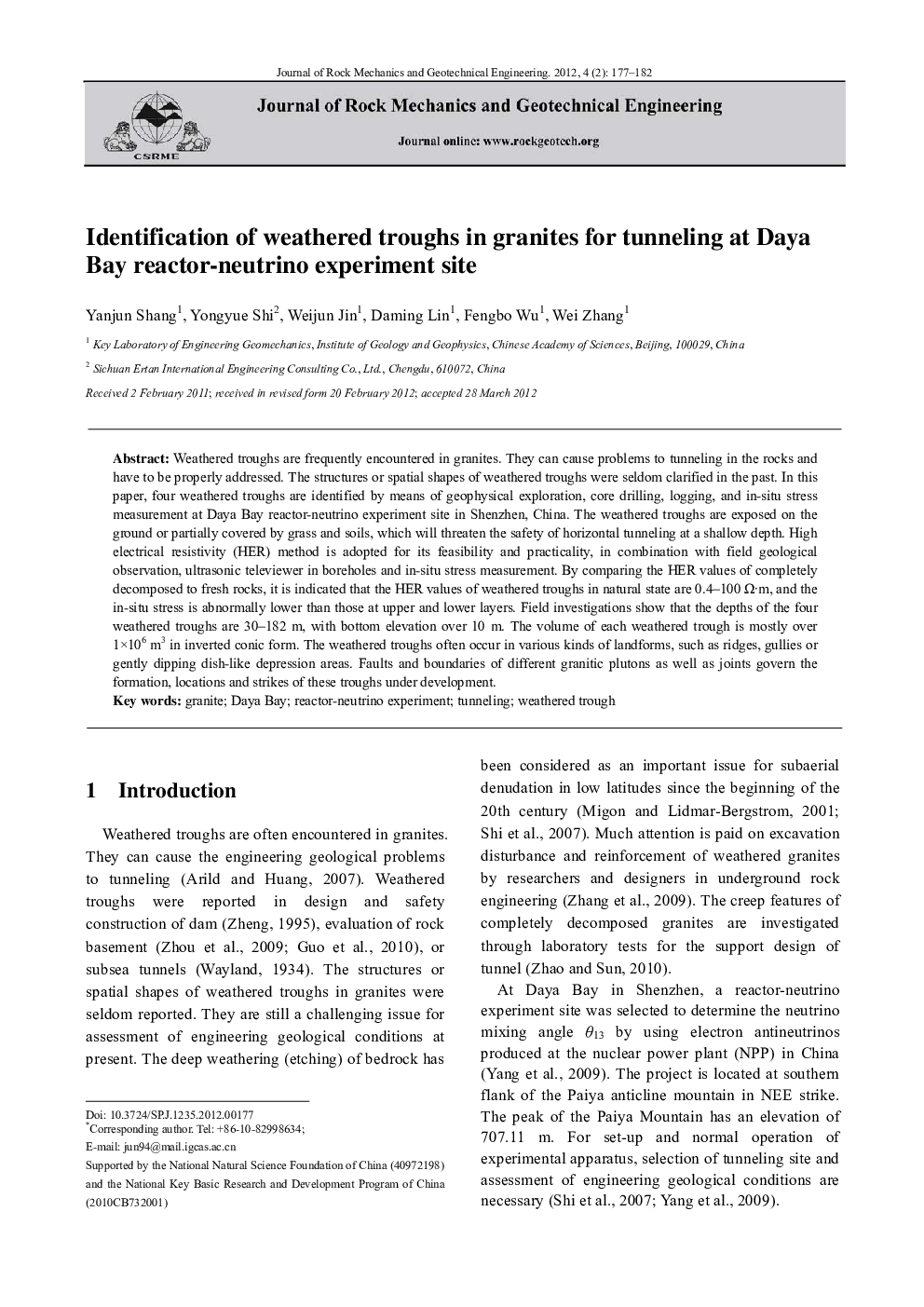| Article ID | Journal | Published Year | Pages | File Type |
|---|---|---|---|---|
| 286839 | Journal of Rock Mechanics and Geotechnical Engineering | 2012 | 6 Pages |
:Weathered troughs are frequently encountered in granites. They can cause problems to tunneling in the rocks and have to be properly addressed. The structures or spatial shapes of weathered troughs were seldom clarified in the past. In this paper, four weathered troughs are identified by means of geophysical exploration, core drilling, logging, and in-situ stress measurement at Daya Bay reactor-neutrino experiment site in Shenzhen, China. The weathered troughs are exposed on the ground or partially covered by grass and soils, which will threaten the safety of horizontal tunneling at a shallow depth. High electrical resistivity (HER) method is adopted for its feasibility and practicality, in combination with field geological observation, ultrasonic televiewer in boreholes and in-situ stress measurement. By comparing the HER values of completely decomposed to fresh rocks, it is indicated that the HER values of weathered troughs in natural state are 0.4–100 Ω · m, and the in-situ stress is abnormally lower than those at upper and lower layers. Field investigations show that the depths of the four weathered troughs are 30–182 m, with bottom elevation over 10 m. The volume of each weathered trough is mostly over 1 × 106 m3 in inverted conic form. The weathered troughs often occur in various kinds of landforms, such as ridges, gullies or gently dipping dish-like depression areas. Faults and boundaries of different granitic plutons as well as joints govern the formation, locations and strikes of these troughs under development.
